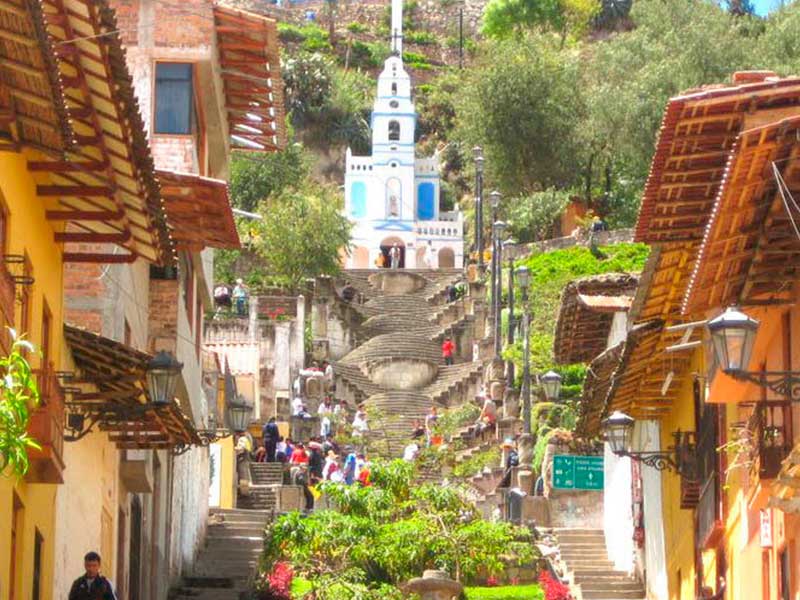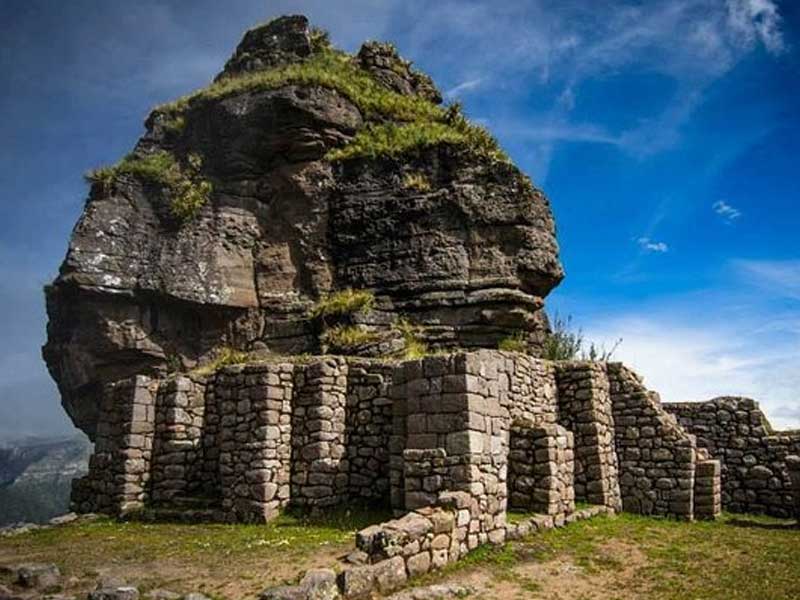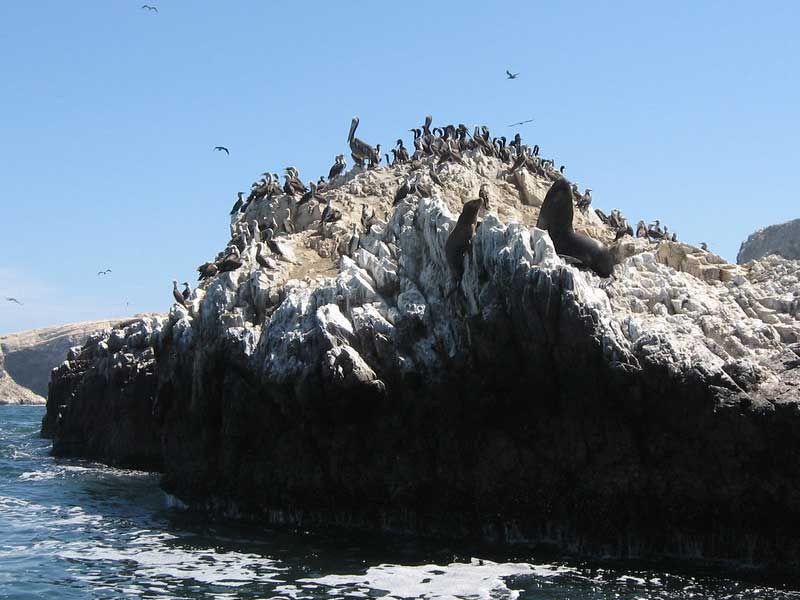From the Amazon to the Andes, Peru is a country with an incredible diversity of microclimates and scenery to see. And if you are already in Peru, many of its destinations are only an affordable bus or plane ticket away. So, mark your next free weekend and consider visiting these five destinations in the land of the Incas.
1. Huacachina
No, it’s not a mirage, but you will probably think it is. Though it may feel like you’ve stumbled upon a desert oasis in the heart of Tatooine, Huacachina attracts many tourists with its plethora of outdoor activities such as sandboarding and dune buggy riding. A small village has developed around this splash of paradise to cater to its visitors. It is made up entirely of restaurants, local craftsmanship and places to stay. The community surrounding the lake almost resembles a gated community and it was recommended to me that I stay in this more populated area.
Accommodations are affordable but it’s not a resort setting. The living space I stayed in was shared and I would suggest bringing a roll of toilet paper or two. But don’t let this deter you. Many of the buildings had stairs to their roofs for stargazing and there’s not much light pollution in the middle of the desert. There was also a pool and lots of good food to be found. So if you’re seeking a piece of the tropics in the Peruvian desert Huacachina is a perfect weekend getaway.

2. Cajamarca
A small city located in the foothills of the Andes, Cajamarca is possibly the best town you’ve never heard of. It is surrounded by stellar hiking and bears a dark but interesting history. Atahualpa, the last Incan king, was executed there after being betrayed by Spanish colonizers. When he was captured, the king noticed the Spaniards’ greed for gold. So he promised to fill a room with gold, then twice over with silver, in exchange for his release. However, when his ransom was delivered, the king was executed anyway. The rooms that Atahualpa filled with treasure still stand today.
But the city has so much more to offer than its colonial scars. Be sure to hike the Cumbe Mayo where you can see an ancient Incan aqueduct, climb through caves and walk the Andean countryside. The area is also famous for its dairy products so stop by one of the cheese farms for some tasters. There’s even a cheese sculpture museum!
Cajamarca was my first trip outside of Lima while I was living in Peru. And even though I was alone and barely spoke any Spanish, I had a wonderful time. The city is very visitor friendly. You can easily walk to all of the main attractions including a long staircase to an amazing lookout point. It’s also a great place to try the infamous Peruvian dish cuy or guinea pig. It’s prepared in a variety of ways but for a first try go for fried. But be prepared to make eye contact with your meal when it arrives.

3. Machu Picchu
Machu Picchu can easily be a weekend adventure. Depending on your interests, this may not be the ideal way. But if trekking isn’t your thing or time just doesn’t allow getting there on foot, hop on the train! The tourist town of Aguas Calientes is barely over a mile from the ruins but that mile is straight up the mountainside. Hiking takes approximately an hour from the base and if you leave by 4:30 a.m. you’ll catch the sunrise.
Part of the beauty of this little backpacker’s pitstop is that it isn’t connected to the outside world by roads. You have two options to get into the town: a train or your own two feet. You can take a taxi from Cusco to Ollantaytambo, a town in the Sacred Valley, then a train to Aguas Calientes. Countless tourist agencies offer travel packages to Machu Picchu as well, ensuring that you aren’t left unattended between taxis and trains.
Peru Rail and Inca Rail are the two companies that operate railroad travel to Machu Picchu. The Hiram Bingham line, named for the man who “discovered” (an argument for another time) the ruins, is the most luxurious. The train is designed after those of the 1920s and amid its elegant interior passengers feel like they have stepped back in time. However, the train is pricey and holds less than 90 passengers. Other lines are comfortable, more economical, and offer 360° views along the Inca Trail.
Any visit to the sacred ruins will be incredible. But if you have the opportunity, climb Huayna Picchu. There is a limited number of people who are permitted to climb this giant peak behind the ruins so reserve your space. The famous peak forms the nose of a man’s face creating a discerning backdrop for the Incan city’s remains.

4. Waqrapukara
I have no regrets about visiting Machu Picchu. But sometimes lesser-known ruins are best. Though worth it, the ticketing and touring experience at Machu Picchu can feel akin to a day at Disneyland. Tours are even operated on a one-way circuit. So if you’re craving an experience that feels a bit more natural or less crowded at the very least, I encourage you to spend a weekend hiking out to Waqrapukara. Located in the greater Cusco region, it’s a doable weekend trip of bus rides, taxis and a fair bit of walking. It’s remote enough though that I wouldn’t recommend going there alone. The hike can be done in a day but if you like being able to feel your legs, I’d bring a tent and make it two.
The couple-hours walk in is arid but beautiful—untouched mountain landscapes and llamas grazing. When you arrive, the ruins at Wakrapukara are imposing. The formation looks like a fortress built on a massive boulder. I love heights and I made all of my companions very nervous. Looking down into the ravine below reminded me of a trip to the Grand Canyon with my family but greener and with incredible historic significance.
With no nearby villages in sight, these ruins are evidence of how widespread the Incan empire really was. One man was guarding the site in a red vest and we wrote down our names and nationalities on his single clipboard. How do you get that job? I was amazed by the simultaneous simplicity and grandeur of it all. So if you want to spare your bank account and avoid the overrated, I’d highly suggest camping at Wakrapukara.

5. Islas Ballestas
Darwin’s research has made the Galapagos Islands famous worldwide. Thousands of tourists flock to them every year to see the spectacular wildlife. Originally, this was my intention too. But the islands were very far away and very expensive to visit. As it turns out though, there is an alternative! Las Islas Ballestas have been affectionately coined the “Poor Man’s Galapagos” and they live up to their name.
The islands are filled with an ecological diversity I hadn’t expected to see, including thousands of sea lions, penguins and birds. Dolphins danced alongside our boat on our way to the islands. But the boat ride can be windy and splashes are expected so be sure to bring layers. The islands aren’t far from the town of Paracas located within the Paracas National Reserve. The reserve is a stunning tropical desert full of yellow cliffs, dark sand and white-tipped ocean waves. It serves to protect the region’s marine species as well as the cultural history of Paracas.
A trip to Las Islas Ballestas only takes about half a day so take time to explore the reserve and visit the La Catedral rock formation which rests in the sea. This little hidden Galapagos is definitely worth a weekend of your time. Don’t forget to take advantage of living and teaching in Peru because it is truly nature’s treasure chest from the desert to the mountainous ruins to the tropical beasts.

